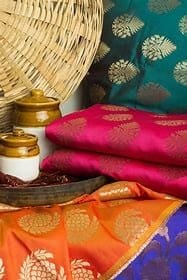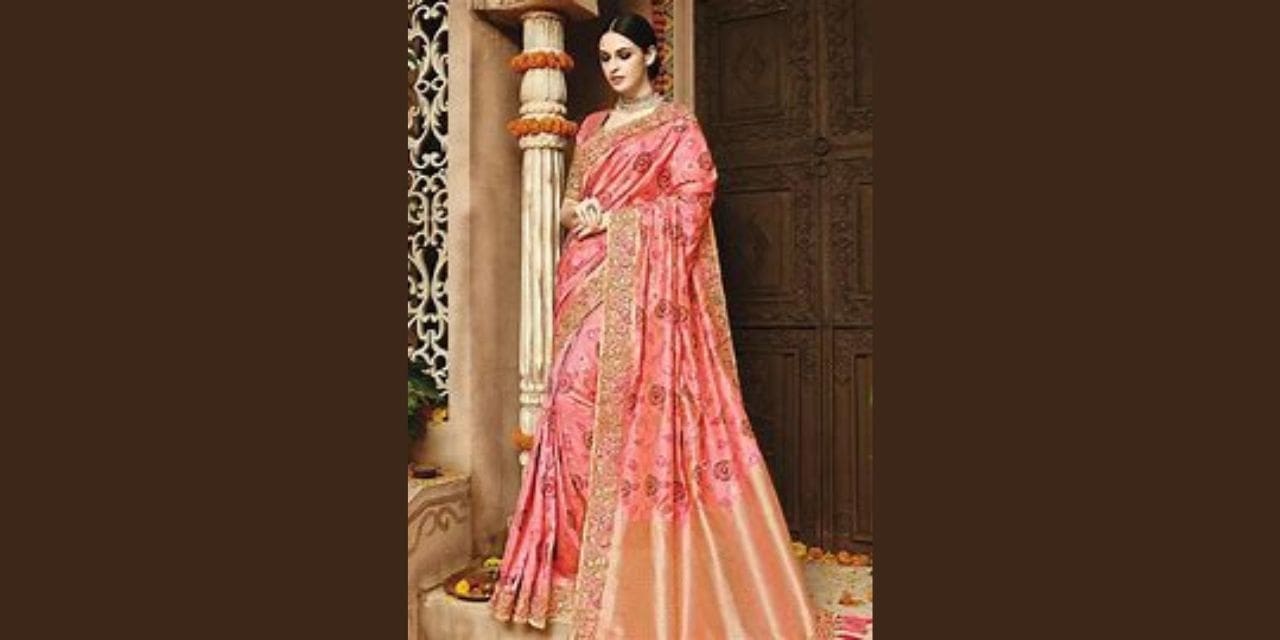Banarasi silk sarees are an exquisite piece of clothing that have been cherished by Indian women for centuries. These sarees originated in Varanasi, also known as Banaras, a city in northern India famous for its rich culture and traditions. Banarasi silk sarees are not just any sarees; they are a symbol of elegance, beauty, and luxury.

The making of Banarasi silk sarees involves a painstaking process that has been perfected over generations. The sarees are made from pure silk and embellished with intricate zari work, which is a weaving technique that involves the use of fine metallic threads. The zari work on Banarasi silk sarees is typically done using gold or silver threads, giving the sarees a dazzling and opulent appearance.
One of the most notable features of Banarasi silk sarees is their intricate and elaborate designs. The designs are usually inspired by Mughal and Persian art and feature motifs such as paisleys, floral patterns, and geometric shapes. The weaving of Banarasi silk sarees is a highly skilled craft that involves the use of handlooms. The weavers are trained in the art of weaving from a young age, and the process can take anywhere from a few days to several months depending on the complexity of the design.

Banarasi silk sarees come in a variety of styles and colors, and they are often worn on special occasions such as weddings and festivals. The sarees are also popular among brides, who wear them as part of their wedding trousseau. The rich texture and luxurious appearance of Banarasi silk sarees make them a popular choice for formal events and ceremonies.
Apart from their aesthetic appeal, Banarasi silk sarees are also known for their durability and longevity. They are made from high-quality silk and the zari work is done with great care, ensuring that the sarees can last for many years if properly cared for.
In recent years, there has been a growing demand for Banarasi silk sarees in international markets. These sarees are now exported to countries such as the United States, United Kingdom, and Australia, where they are appreciated for their beauty and craftsmanship.
However, in recent years, there has also been a growing concern over the production of fake Banarasi sarees in China, which are having a significant impact on the Indian market.
The production of fake Banarasi sarees in China is not a new phenomenon. In fact, it has been going on for over a decade. However, with the rise of e-commerce platforms and the ease of online shopping, these fake sarees are now readily available to consumers worldwide. The fake sarees are sold at a fraction of the cost of genuine Banarasi sarees, making them an attractive option for buyers looking for a bargain.
The problem with these fake sarees is that they are often made using low-quality materials and inferior weaving techniques, resulting in a subpar product that does not match the beauty and quality of genuine Banarasi sarees. In addition, the production of fake sarees is detrimental to the Indian economy, as it deprives local artisans of their livelihood and hinders the growth of the textile industry.
The Indian government has taken steps to address the issue by creating a Geographical Indication (GI) registry for Banarasi sarees. The GI tag ensures that only sarees made in Varanasi can be sold as Banarasi sarees. However, the implementation of the GI tag has not been without challenges. For instance, many saree weavers in Varanasi work in unorganized sectors, making it difficult to trace the origin of the sarees. Furthermore, the GI tag does not have international recognition, meaning that fake sarees can still be sold in foreign markets.
The impact of fake Banarasi sarees on the Indian market has been significant. Many weavers in Varanasi have been forced to lower their prices to compete with the cheaper fake sarees, resulting in lower profits and wages. Moreover, the loss of revenue has hindered the growth of the textile industry, which is a significant contributor to India’s economy.
To identify a genuine Banarasi saree, consumers should look for certain hallmarks of authenticity. Firstly, the saree should be made of pure silk and have a weight to it. Secondly, genuine Banarasi sarees have intricate Zari work which is done with real gold or silver threads. Thirdly, the designs on the saree should be inspired by Mughal and Persian art and feature motifs such as paisleys, floral patterns, and geometric shapes. Fourthly, the saree should have a special tag or label certifying its authenticity, such as the Geographical Indication (GI) tag. Finally, the cost of a genuine Banarasi saree is usually higher than a fake one, so if the price seems too good to be true, it probably is. By paying attention to these factors, consumers can ensure they are buying a genuine Banarasi saree and supporting the local artisans who produce them.

